When Canada first discovered nepheline syenite in 1932, it marked a milestone in the history of glass and ceramic making. It has igneous formation with composition of alkali feldspar and nepheline. This rock is a perfect replacement for felspar in ceramic and glass. Nepheline syenite has white to light grey medium-grained color. It includes mostly of soda feldspar, nepheline and potash feldspar, accessory magnesium and iron-rich minerals are also seen in the structure. 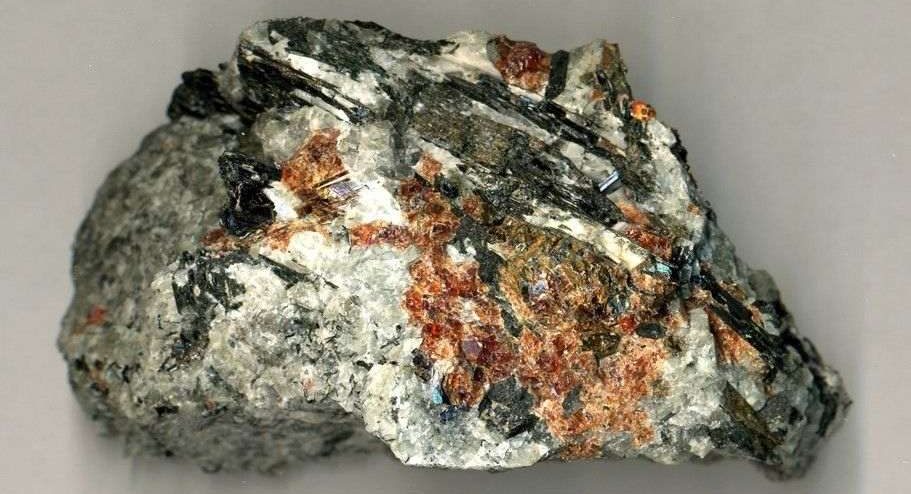 The Canadian nepheline syenite industry initiated in 1932 when claims for such a nice colored stone were staked on Blue Mountain near Peterborough, Ontario, where it is so far produced on large scales. Persistent and lengthy trials in technical and market-based research and development were crucial to establish this industry. Canada was the first country to grow the utilization of nepheline syenite as a raw material for glass, ceramic and filler making industries and was the world's only producer of nepheline syenite for many years. During many years, nepheline syenite has become favored to feldspar as a source of alumina and alkalis for glass production. It develops more rapid melting at lower temperatures, thus decreasing energy consumption, prolonging the life of the furnace and develop the yield and quality of glass. This material is widely used in ceramic glazes and enamels and in fillers in paints, papers, plastics, and foam rubber production.
The Canadian nepheline syenite industry initiated in 1932 when claims for such a nice colored stone were staked on Blue Mountain near Peterborough, Ontario, where it is so far produced on large scales. Persistent and lengthy trials in technical and market-based research and development were crucial to establish this industry. Canada was the first country to grow the utilization of nepheline syenite as a raw material for glass, ceramic and filler making industries and was the world's only producer of nepheline syenite for many years. During many years, nepheline syenite has become favored to feldspar as a source of alumina and alkalis for glass production. It develops more rapid melting at lower temperatures, thus decreasing energy consumption, prolonging the life of the furnace and develop the yield and quality of glass. This material is widely used in ceramic glazes and enamels and in fillers in paints, papers, plastics, and foam rubber production. 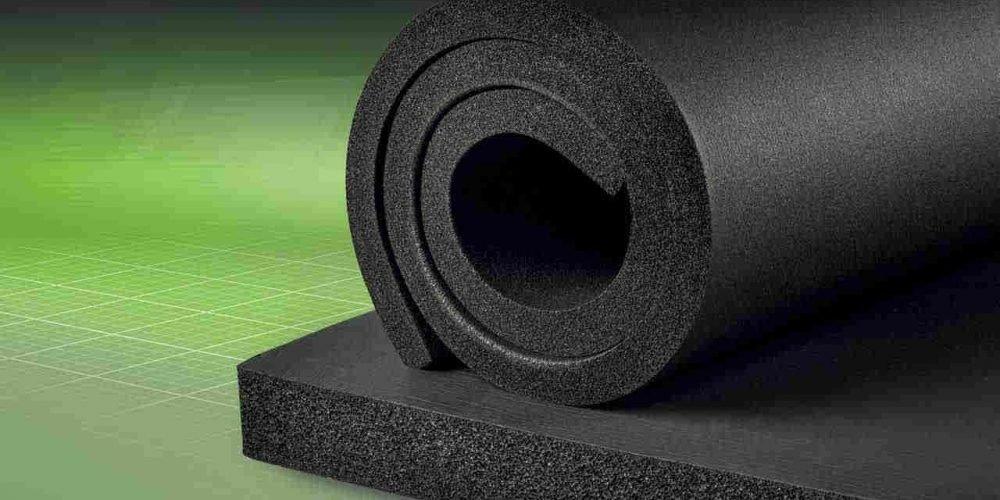 In Canada, around two-thirds of nepheline syenite is used by the glass industry for producing containers, flat glass, insulating fiberglass and textile glass fiber. Nepheline syenite is excavated from open pit mines around the world. Ore is hauled to the mill, where it is put through a magnetic separation circuit carefully to remove iron-bearing minerals from it. The mill produces several grades of nepheline syenite products, based on grain size and iron content, to meet the requirements of a wide variety of markets. Annual shipments of nepheline exceed 700 000 tons. Therefor it is widely believed that nepheline syenite discovery has marked a milestone in the history of glass and cement production. This widely useful rock later was utilized instead of feldspar in the structure of ceramic and glass by almost all countries around the world. Syenite is basically a coarse-grained intrusive igneous rock with an entire composition like that of granite, but deficient in quartz, which, if existing at all, occurs in fairly small concentrations (< 5%).
In Canada, around two-thirds of nepheline syenite is used by the glass industry for producing containers, flat glass, insulating fiberglass and textile glass fiber. Nepheline syenite is excavated from open pit mines around the world. Ore is hauled to the mill, where it is put through a magnetic separation circuit carefully to remove iron-bearing minerals from it. The mill produces several grades of nepheline syenite products, based on grain size and iron content, to meet the requirements of a wide variety of markets. Annual shipments of nepheline exceed 700 000 tons. Therefor it is widely believed that nepheline syenite discovery has marked a milestone in the history of glass and cement production. This widely useful rock later was utilized instead of feldspar in the structure of ceramic and glass by almost all countries around the world. Syenite is basically a coarse-grained intrusive igneous rock with an entire composition like that of granite, but deficient in quartz, which, if existing at all, occurs in fairly small concentrations (< 5%). 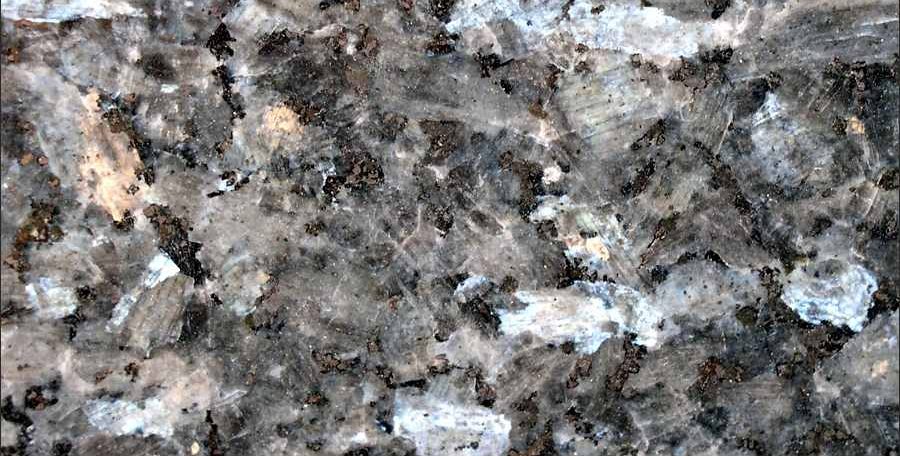 Some syenites include larger amounts of mafic components and lower proportions of felsic material than most granites; those are classified as being of moderate composition. The volcanic form of syenite is an igneous rock called trachyte. This rock also functions like syenite but since it is rare in the nature it is not widely traded amongst countries.
Some syenites include larger amounts of mafic components and lower proportions of felsic material than most granites; those are classified as being of moderate composition. The volcanic form of syenite is an igneous rock called trachyte. This rock also functions like syenite but since it is rare in the nature it is not widely traded amongst countries.
Composition of syenites
The feldspar chemical composition of syenite is predominantly alkaline in character (often orthoclase). Plagioclase feldspars might be present in small amounts, less than 10% usually. Such feldspars mostly are interleaved as perthitic components of the stone. When ferromagnesian minerals exist in syenite at all, they often occur in the form of hornblende, amphibole and clinopyroxene. Biotite is scarce, because in a syenite magma the composition of feldspar consumes almost all the aluminum. However less Al-rich phyllosilicates might be included, like annite. Some Other usual accessory minerals are apatite, titanite, zircon and opaques. Most forms of syenites are either peralkaline with high amounts of alkali elements relative to aluminum, or peraluminous with a larger focusing of aluminum relative to alkali and earth-alkali elements. 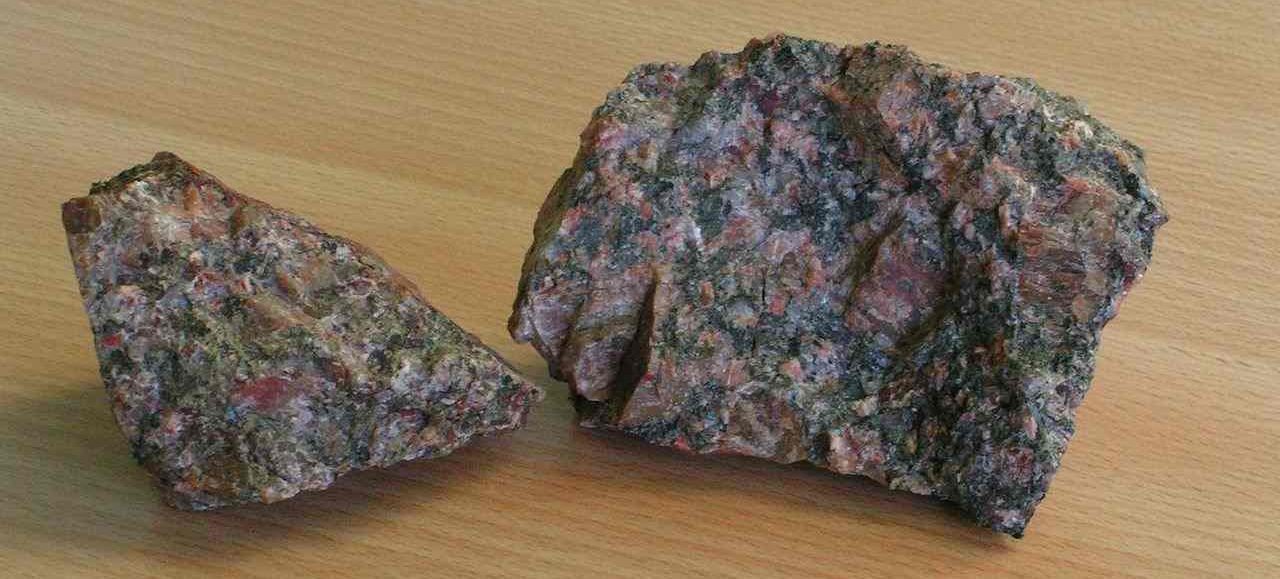
Formation of syenites
Syenites are results of alkaline igneous activity, generally formed in thick continental crustal regions, or in Cordilleran subduction areas. To manufacture a syenite rock, it is necessary to melt a granitic or igneous protolith to a relatively lowered degree of partial melting. This is needed because potassium is an incompatible element in nature and tends to enter a melt first, while higher degrees of partial melting will release more calcium and sodium, producing plagioclase, granite, adamellite or tonalite. Syenites have a majorly igneous structure and are perfect replacements for feldspar in all fields. At very lower degrees of partial melting a silica undersaturated melt is resulted, which forms a nepheline syenite, where orthoclase is replaced by a feldspathoid like leucite, nepheline or analcime. Conversely in specific conditions, large volumes of anorthite and gypsum crystals might precipitate from entirely molten magma in a cumulate process as it cools down. This leaves a highly decreased concentration of silica in the remainder portions of the melt. The segregation of the silica from the melt leaves it in a state that might favor syenite composition. 
Occurrence of syenites
Syenite is not a currently used rock. Regions where it forms in significant quantities are as following: In the Kola Peninsula of Russia two huge nepheline syenite bodies exists which make up the Lovozero Massif and the Khibiny Mountains. These syenites form part of the Kola Alkaline Province. In North America syenite is found in Arkansas and Montana states. areas in New England have large amounts, and in New York syenite gneisses also occur in sizeable amounts. The "great syenite dyke" extends from widely Hanging Rocks, South Carolina through Taxahaw, South Carolina to the Brewer and Edgeworth mines in Chesterfield, located in South Carolina. Syenite pebbles, including fluorescent sodalite, were transferred from Canada to Michigan by glaciers; these glacial erratic pebbles have the commercial name "Yooperlite". In other areas of the world, these kinds of rocks are considered as sodalite-syenite and largely occur in Canada, India, US states, Greenland, Malawi, and Russia. 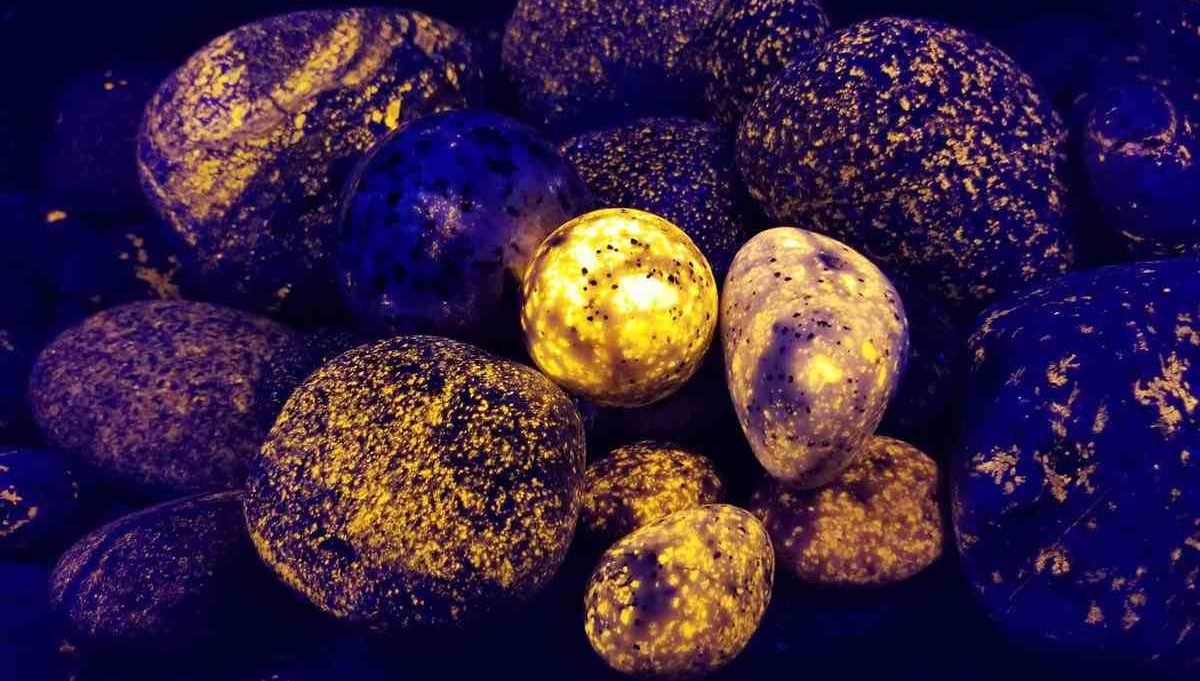 In Europe, syenite rocks might occur in parts of Switzerland, Germany, Norway, Portugal, Sweden, Scotland, Plovdiv, Bulgaria and also in Ditrău, Romania. In Africa, syenite formations mostly occur in Aswan, Egypt, and in Malawi especially in the Mulanje Mountain Forest Reserve. Syenite rock was utilized to produce the Quay with Sphinxes. In Australia syenite forms as small intrusive bodies in almost every state. In New South Wales, a large syenite intruded through the breakup of Gondwana in the Cretaceous. Paatusoq and Kangerluluk fjords located in southeastern Greenland, where a bay through the latter (Syenitbugt) and a headland (Syenitnæs) are named after the rock. Etymology The term syenite was basically applied to hornblende granite like that of Syene (now Aswan) in Egypt, from which the name is derived. Episyenite Episyenite (or epi-syenite) is a term utilized in petrology for describing veins, pods, or lenses of rock originally rich in silicon dioxide (SiO2) from which quartz was largely depleted.
In Europe, syenite rocks might occur in parts of Switzerland, Germany, Norway, Portugal, Sweden, Scotland, Plovdiv, Bulgaria and also in Ditrău, Romania. In Africa, syenite formations mostly occur in Aswan, Egypt, and in Malawi especially in the Mulanje Mountain Forest Reserve. Syenite rock was utilized to produce the Quay with Sphinxes. In Australia syenite forms as small intrusive bodies in almost every state. In New South Wales, a large syenite intruded through the breakup of Gondwana in the Cretaceous. Paatusoq and Kangerluluk fjords located in southeastern Greenland, where a bay through the latter (Syenitbugt) and a headland (Syenitnæs) are named after the rock. Etymology The term syenite was basically applied to hornblende granite like that of Syene (now Aswan) in Egypt, from which the name is derived. Episyenite Episyenite (or epi-syenite) is a term utilized in petrology for describing veins, pods, or lenses of rock originally rich in silicon dioxide (SiO2) from which quartz was largely depleted.  This is usually accompanied by strong enriching of potassium and scarce earth elements, leaving the altered rock a special brick red color, or by albitization (enrichment in sodium), leaving the transformed rock a conspicuous white color. Episyenites are heterogenous in terms of their properties, but all have experienced almost entire disappearance of quartz at sub-solidus temperatures; that is, at temperatures lower than the melting point of the host rock. The formation of episyenites (episyenitization) usually occurs through leaching of quartz by mildly saline hydrothermal fluids, typically close to a cooling intrusion. Because episyenitization usually originates in granitoid rock s. Syenite belongs to any of a class of intrusive igneous rocks majorly composed of an alkali feldspar and a ferromagnesian mineral. A specific group of alkali syenites is characterized by the existence of a feldspathoid mineral like nepheline, leucite, cancrinite, or sodalite. Chemically, syenites is composed of a moderate amount of silica, fairly large amounts of alkali, and alumina. The name was first utilized by Pliny the Elder. The texture of syenite and quartz rock, similar to that of granite, is granular, and these rocks differ from granite solely by the absence or scarcity of quartz.
This is usually accompanied by strong enriching of potassium and scarce earth elements, leaving the altered rock a special brick red color, or by albitization (enrichment in sodium), leaving the transformed rock a conspicuous white color. Episyenites are heterogenous in terms of their properties, but all have experienced almost entire disappearance of quartz at sub-solidus temperatures; that is, at temperatures lower than the melting point of the host rock. The formation of episyenites (episyenitization) usually occurs through leaching of quartz by mildly saline hydrothermal fluids, typically close to a cooling intrusion. Because episyenitization usually originates in granitoid rock s. Syenite belongs to any of a class of intrusive igneous rocks majorly composed of an alkali feldspar and a ferromagnesian mineral. A specific group of alkali syenites is characterized by the existence of a feldspathoid mineral like nepheline, leucite, cancrinite, or sodalite. Chemically, syenites is composed of a moderate amount of silica, fairly large amounts of alkali, and alumina. The name was first utilized by Pliny the Elder. The texture of syenite and quartz rock, similar to that of granite, is granular, and these rocks differ from granite solely by the absence or scarcity of quartz. 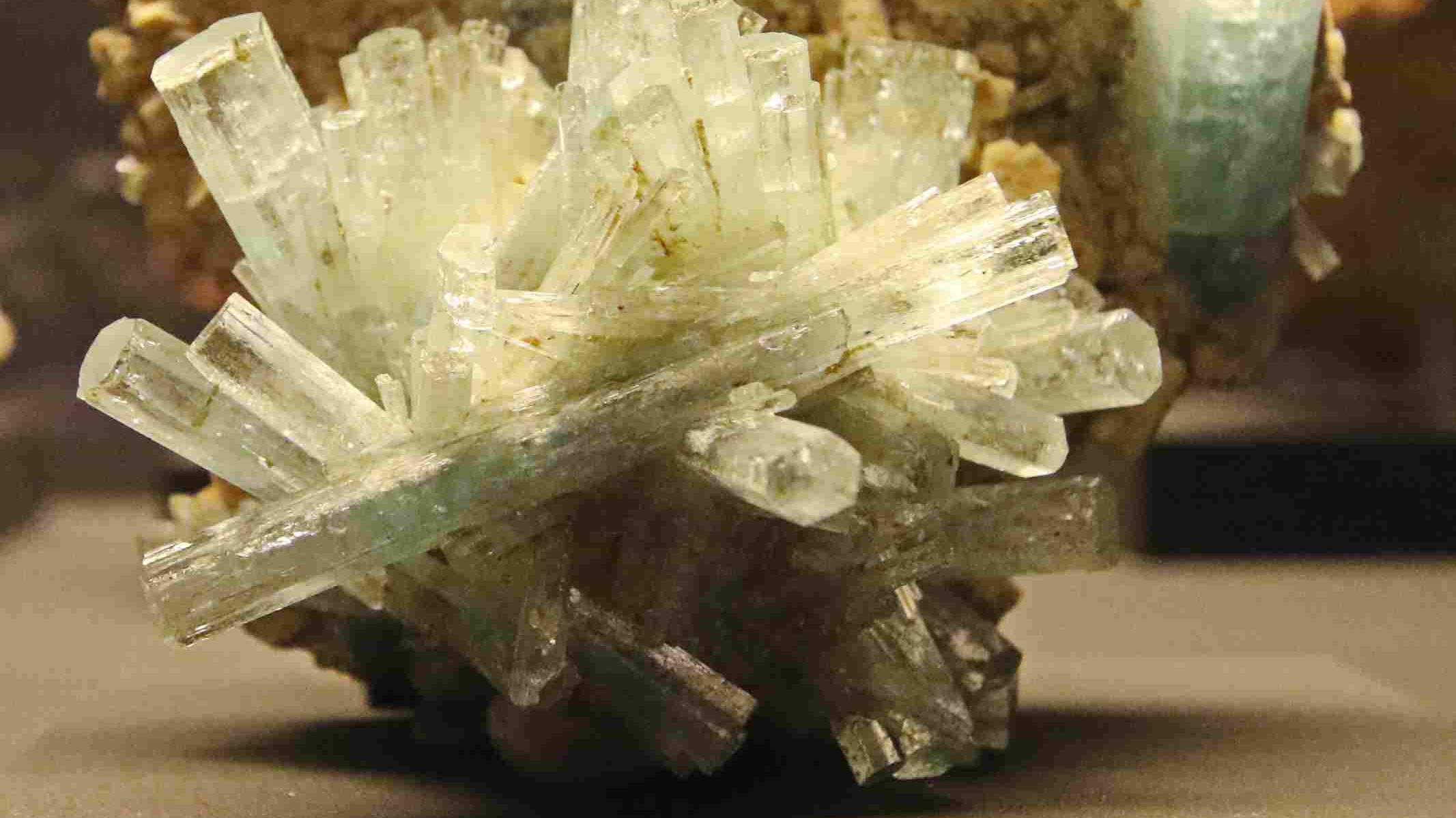 The alkali feldspars present may be composed of orthoclase, perthite, albite, or, more scarcely, microcline; the ferromagnesian mineral might be biotite, hornblende, or pyroxene. In the structure of alkali syenites, the amphiboles or pyroxenes frequently include sodium. The more normal syenites are divisible based on their prevalent dark-colored mineral into augite-, hornblende-, and biotite-syenites; but, similar to granites, syenites are divisible according to the type of alkali feldspar inside potash and soda syenites. The accessory constituents contain titanite, apatite, zircon, magnetite, and pyrites. Syenites are a lot less common than granites and diorites. The rocks known to be as nordmarkite and pulaskite are soda syenites. Rocks transitional between syenites and diorites are recognized as monzonites. Syenite is an intrusive igneous stone that is basically composed of an alkali feldspar and also a ferromagnesian mineral. A unique group of alkali syenites is classified by the presence of a feldspathoid mineral including nepheline, leucite, cancrinite, or sodalite (see nepheline syenite). Chemically, syenites are composed of a slight amount of silica, incredibly big amounts of alkali, and alumina.
The alkali feldspars present may be composed of orthoclase, perthite, albite, or, more scarcely, microcline; the ferromagnesian mineral might be biotite, hornblende, or pyroxene. In the structure of alkali syenites, the amphiboles or pyroxenes frequently include sodium. The more normal syenites are divisible based on their prevalent dark-colored mineral into augite-, hornblende-, and biotite-syenites; but, similar to granites, syenites are divisible according to the type of alkali feldspar inside potash and soda syenites. The accessory constituents contain titanite, apatite, zircon, magnetite, and pyrites. Syenites are a lot less common than granites and diorites. The rocks known to be as nordmarkite and pulaskite are soda syenites. Rocks transitional between syenites and diorites are recognized as monzonites. Syenite is an intrusive igneous stone that is basically composed of an alkali feldspar and also a ferromagnesian mineral. A unique group of alkali syenites is classified by the presence of a feldspathoid mineral including nepheline, leucite, cancrinite, or sodalite (see nepheline syenite). Chemically, syenites are composed of a slight amount of silica, incredibly big amounts of alkali, and alumina. 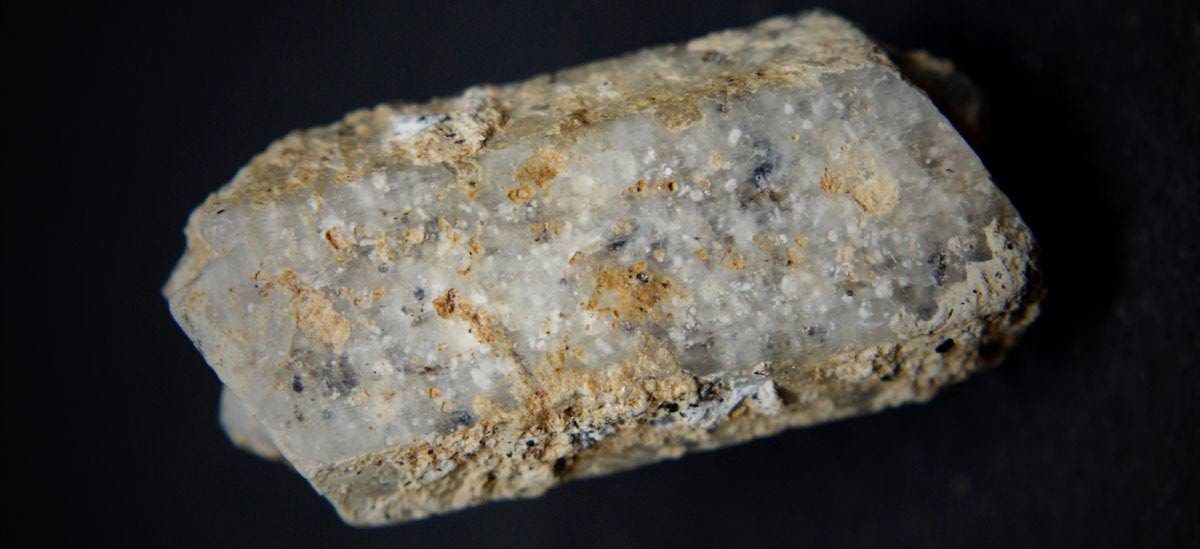
Classification of Syenite
Different syenitic rock types occupy large part of the QAPF diagram. The pure syenites are stones that fit into the area annotated in red. Syenitic rocks are majorly composed of alkali feldspar with minor proportions of quartz. Plagioclase feldspar is obviously less important than alkali Feldspar. Foid syenites include significant amount of relatively scarce silicate minerals known as feldspathoids (F) which are called foids for simplicity. Syenitic rock that includes quartz cannot contain feldspathoids and vice versa — foid-bearing and foid syenites include no quartz.
Syenite Chemical Composition
Syenite predominant mineral composition has alkaline character. Plagioclase feldspar might be present in small amount less than 10%. Such feldspars usually are interleaved as perthitic components of the stone. 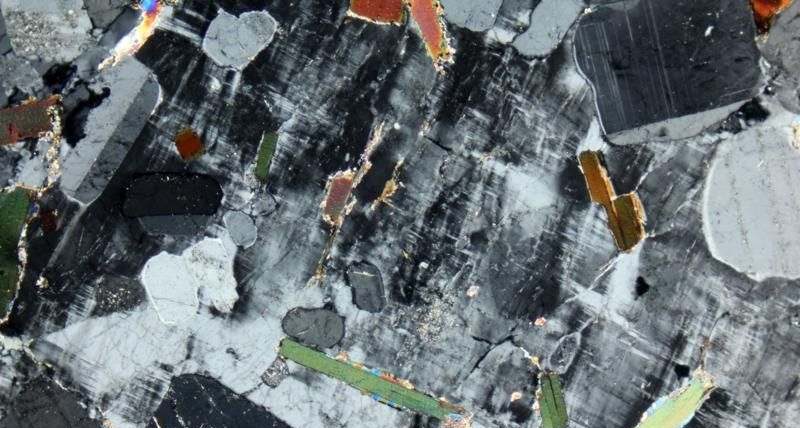 If ferromagnesian minerals exist in syenite most of all, they usually take place in hornblende, amphibole and clinopyroxene. Biotite is scarce. Other current accessory minerals are apatite, titanite, zircon and opaques. Most syenites are either peralkaline including high proportions of alkali elements relative to aluminum, or peraluminous containing higher concentration of aluminum relative to alkali and earth-alkali elements.
If ferromagnesian minerals exist in syenite most of all, they usually take place in hornblende, amphibole and clinopyroxene. Biotite is scarce. Other current accessory minerals are apatite, titanite, zircon and opaques. Most syenites are either peralkaline including high proportions of alkali elements relative to aluminum, or peraluminous containing higher concentration of aluminum relative to alkali and earth-alkali elements.
Formation of the Syenite
Formation of syenites refers to products of alkaline mostly igneous activity, usually formed in thick continental crustal areas, or in Cordilleran subduction areas. Producing Syenite is necessary to melt a granitic or igneous protolith to a fairly low degree of incomplete melting. This is required since potassium is an incompatible element and is likely enter a melt first, while higher degrees of partial melting will liberate more calcium and sodium, which form plagioclase, and hence a granite, adamellite or tonalite. At a very low levels of partial melting a silica undersaturated melt is resulted, forming a nepheline syenite, where orthoclase is exchanged by a feldspathoid such as leucite, nepheline or analcime. 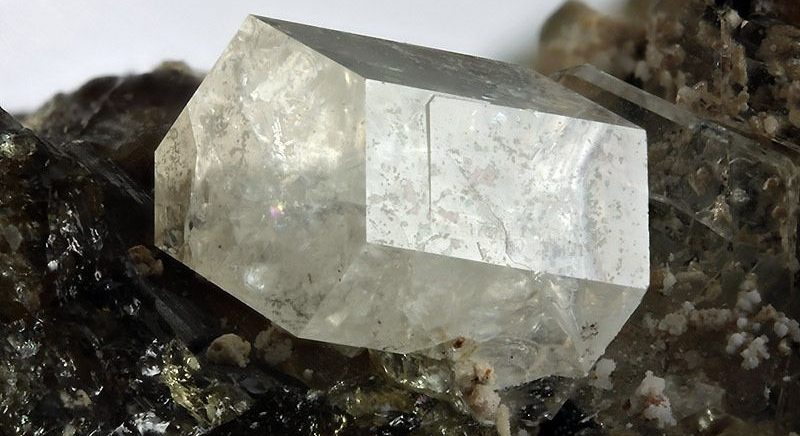 Conversely in special conditions, larger volumes of anorthite crystals might precipitate from thoroughly molten magma in a cumulate process as it cools down. This leaves a largely reduced concentration of silica in the remaining of the melt. The segregation of the silica from the melt leaves it in a state that might favor syenite formation.
Conversely in special conditions, larger volumes of anorthite crystals might precipitate from thoroughly molten magma in a cumulate process as it cools down. This leaves a largely reduced concentration of silica in the remaining of the melt. The segregation of the silica from the melt leaves it in a state that might favor syenite formation.
Uses of The Syenite Rock
- Flooring houses, Hotel gardens, Interior Decoration of all interior designs
- As a Building Stone, As a Facing Stone, widely used in Paving Stone, Garden Decoration structure, Office Buildings
- Curbing
- As a Dimension Stone, Cement production, building Aggregate, for Road Aggregate, Landscaping, producing natural cement, Manufacture of Magnesium and Dolomite Refractories
- Artifacts, different Monuments, Sculpture, Small Figurines of people or..
- Colorful Cemetery Markers, Creating Artwork
Aluminum, glass, ceramics, plastics and rubber, the production of wool and mineral glass, chemical fertilizers, and etc. have received much attention in most countries of the world. On the one hand, countries that do not have bauxite-rich reserves (Soviet Union, North Korea, etc.) as an important source of alumina production. 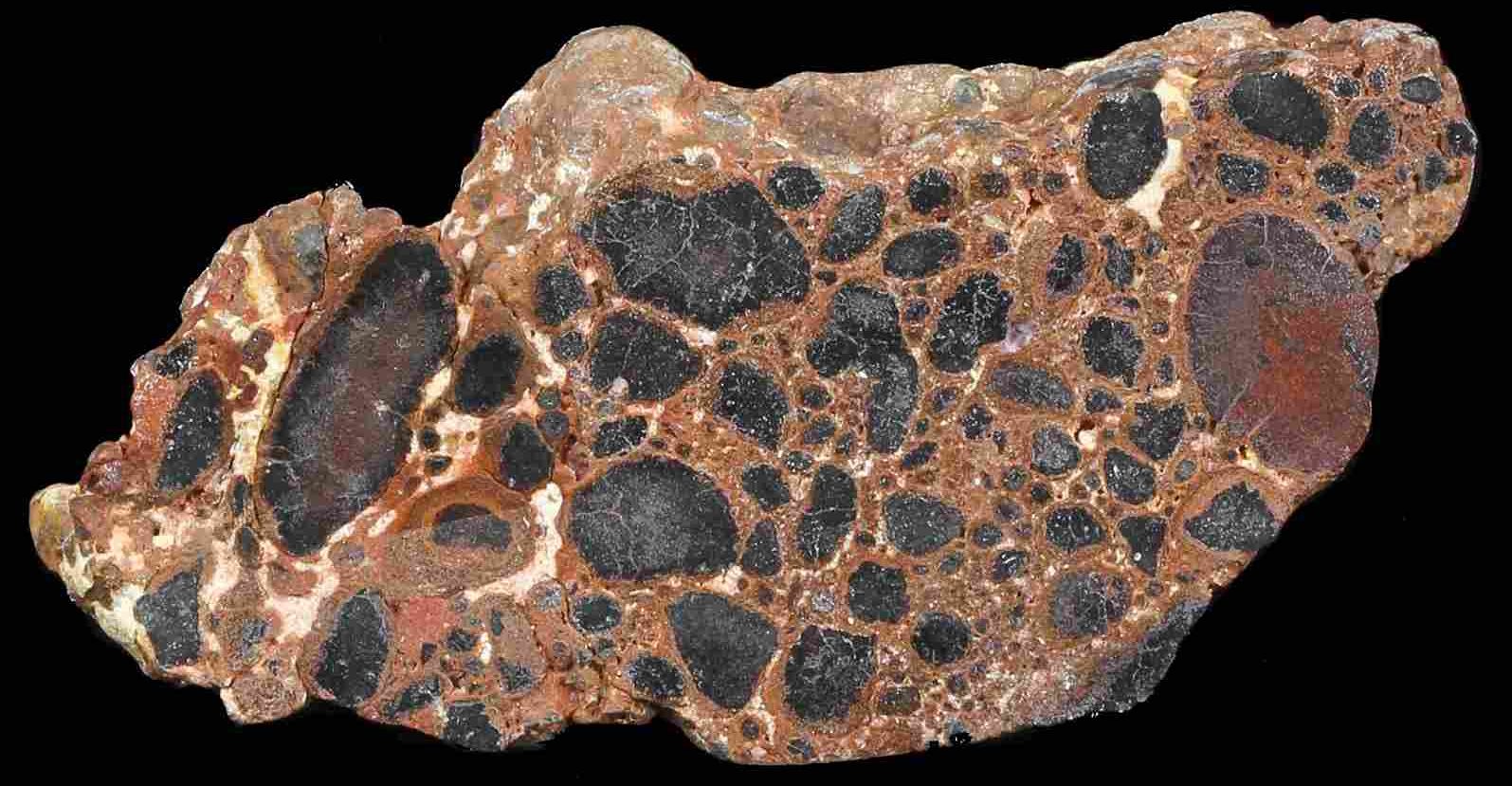 On the other hand, in countries that are rich in bauxite resources or cheap bauxite, syenite is available (Western countries, USA, Canada) due to the abundance of alkali in the glass and ceramic industry. Nepheline syenite has received a lot of attention in most countries of the world due to its extraordinary value in the industry (aluminum, glass, ceramic, plastic, and rubber industries, production of wool and mineral glass, chemical fertilizers, etc.). On the one hand, in countries that do not have bauxite-rich reserves (Soviet Union, North Korea, etc.) as an important source for alumina production. On the other hand, in countries that are rich in bauxite resources or cheap bauxite (Western countries, USA, Canada) are widely used in glass and ceramic industries due to the abundance of alkali. Nepheline syenite is used to produce alumina only in the Soviet Union (North Korea has also recently established a nepheline alumina plant, which will soon be in production. Mexico and Brazil are also studying and producing Alumina which is made of nepheline. These countries started working on nepheline to produce alumina in 1932, and in 1941 established the first alumina production plant called "Volkhov" based on nepheline raw material, whose economic production since 1951 based on 50,000 tons of alumina per year. They then established the Picalova plant in 1959 with an annual capacity of 200,000 tons of alfalfa from alfalfa, and finally the Achinsk plant, which is perhaps the largest alumina plant in the world.
On the other hand, in countries that are rich in bauxite resources or cheap bauxite, syenite is available (Western countries, USA, Canada) due to the abundance of alkali in the glass and ceramic industry. Nepheline syenite has received a lot of attention in most countries of the world due to its extraordinary value in the industry (aluminum, glass, ceramic, plastic, and rubber industries, production of wool and mineral glass, chemical fertilizers, etc.). On the one hand, in countries that do not have bauxite-rich reserves (Soviet Union, North Korea, etc.) as an important source for alumina production. On the other hand, in countries that are rich in bauxite resources or cheap bauxite (Western countries, USA, Canada) are widely used in glass and ceramic industries due to the abundance of alkali. Nepheline syenite is used to produce alumina only in the Soviet Union (North Korea has also recently established a nepheline alumina plant, which will soon be in production. Mexico and Brazil are also studying and producing Alumina which is made of nepheline. These countries started working on nepheline to produce alumina in 1932, and in 1941 established the first alumina production plant called "Volkhov" based on nepheline raw material, whose economic production since 1951 based on 50,000 tons of alumina per year. They then established the Picalova plant in 1959 with an annual capacity of 200,000 tons of alfalfa from alfalfa, and finally the Achinsk plant, which is perhaps the largest alumina plant in the world. 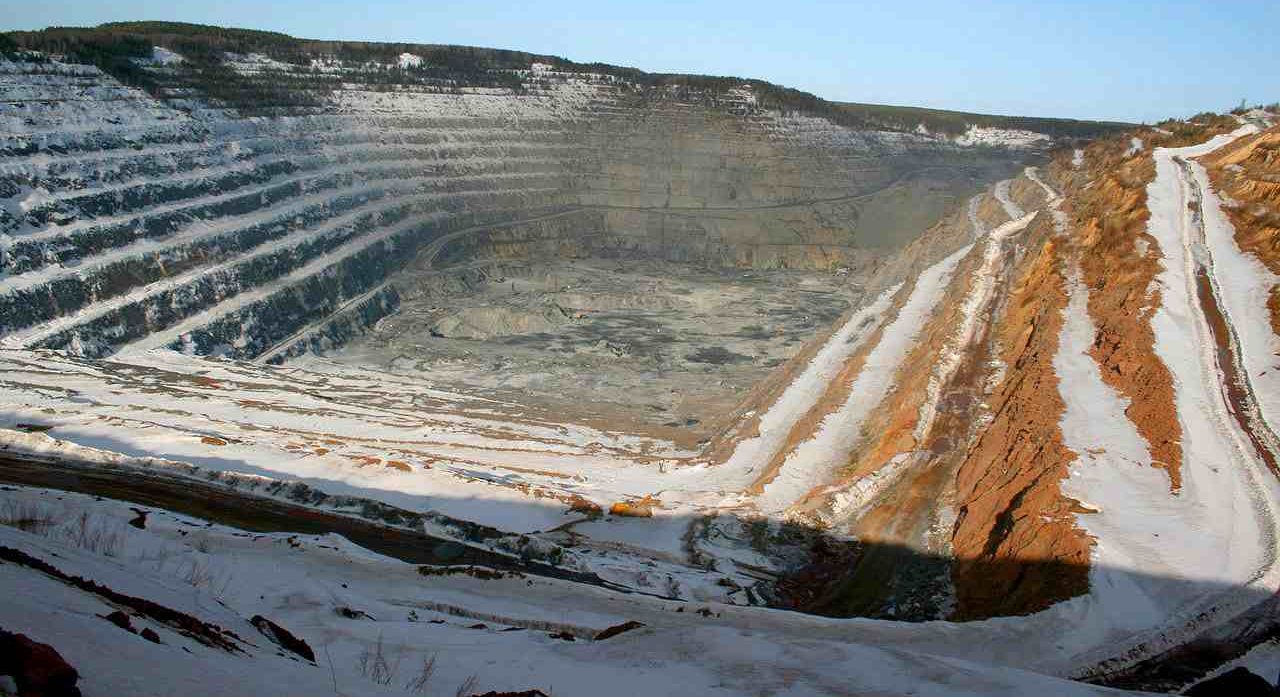 In 1970, the production of syenite was with an annual capacity of 800,000 tons of alfalfa from nepheline. Recently, a plant with a capacity of 1.5 million tons per year has been planned in this country which is based on the raw material of nepheline. Although the technology of chemical conversion of nepheline rocks is a bit more complicated than the production of alumina from bauxite by barren method, due to valuable by-products such as Portland cement, sodium and potassium carbonates and phosphate, the total cost will be about 15 to 20% cheaper. The comparison between the three raw materials of nepheline (Pikalova factory), high quality bauxite (Yugoslav factory) and poor bauxite (Paludar factory) shows the profitability and economy of using nepheline. In general, if we want to establish a plant for the production of alumina from nepheline with an annual capacity of 100,000 tons, we will need about 400,000 tons of nepheline concentrate and more than 1.3 million tons of lime. In this case, the products obtained will be as follows:
In 1970, the production of syenite was with an annual capacity of 800,000 tons of alfalfa from nepheline. Recently, a plant with a capacity of 1.5 million tons per year has been planned in this country which is based on the raw material of nepheline. Although the technology of chemical conversion of nepheline rocks is a bit more complicated than the production of alumina from bauxite by barren method, due to valuable by-products such as Portland cement, sodium and potassium carbonates and phosphate, the total cost will be about 15 to 20% cheaper. The comparison between the three raw materials of nepheline (Pikalova factory), high quality bauxite (Yugoslav factory) and poor bauxite (Paludar factory) shows the profitability and economy of using nepheline. In general, if we want to establish a plant for the production of alumina from nepheline with an annual capacity of 100,000 tons, we will need about 400,000 tons of nepheline concentrate and more than 1.3 million tons of lime. In this case, the products obtained will be as follows:
- Alumina 100 thousand tons
- Sodium carbonate 60 to 70 thousand tons
- Potassium carbonate 20 to 30 thousand tons
- Portland cement 900,000 to 1.5 million tons
- Phosphate rock 15 to 25 thousand tons
 Due to the mentioned estimations, the use of nepheline in the production of alumina is expanding day by day. The technology of production of alumina from nepheline in addition to the Soviet Union and North Korea and has been considered in other countries, such as Mexico, Brazil, USA, and Canada. And more recently Pakistan is also considering the use of nepheline in alumina production. In western industrialized countries, alumina is produced from bauxite and it is in the hands of large monopolies. Since the use of nepheline in the production of alumina requires a reinvestment in this field and the cessation of previous investments in the production of alumina from bauxite. This is not in the interest of large monopolies and they try to maintain the current traditional method of alumina production for They have bauxite. Preliminary studies have confirmed large deposits of nepheline syenite in East Azerbaijan (Nepheline syenite in the south of Canada, nepheline syphilis in the north of the US and nepheline syenite in the south of Mexico). They are located linearly approximately in such areas of these countries. They are probably derived from the subtraction of an alkane basaltic magma originating from the upper mantle and rising along an intercontinental hollow zone.
Due to the mentioned estimations, the use of nepheline in the production of alumina is expanding day by day. The technology of production of alumina from nepheline in addition to the Soviet Union and North Korea and has been considered in other countries, such as Mexico, Brazil, USA, and Canada. And more recently Pakistan is also considering the use of nepheline in alumina production. In western industrialized countries, alumina is produced from bauxite and it is in the hands of large monopolies. Since the use of nepheline in the production of alumina requires a reinvestment in this field and the cessation of previous investments in the production of alumina from bauxite. This is not in the interest of large monopolies and they try to maintain the current traditional method of alumina production for They have bauxite. Preliminary studies have confirmed large deposits of nepheline syenite in East Azerbaijan (Nepheline syenite in the south of Canada, nepheline syphilis in the north of the US and nepheline syenite in the south of Mexico). They are located linearly approximately in such areas of these countries. They are probably derived from the subtraction of an alkane basaltic magma originating from the upper mantle and rising along an intercontinental hollow zone.  It seems that the first crystalline phase in these rocks was leucite, which lost its stability due to the increase in water vapor and was converted to nepheline and feldspar. Semi-detailed studies on intrusive masses of goats and goats confirmed the possibility of their use in the production of alumina (goats) and ceramic glass (goats). The Kalibar intrusive mass, which shows a better outlook both in terms of rock storage and the amount of nepheline and proximity to the high-purity lime deposit, is currently being studied by experts from the Geological Survey. Bozgoosh intrusion mass with an approximate area of about 30 square kilometers in Iran is located 20 km south of Sarab city and forms the peak of Bozgoosh mountain with an altitude of 3300 meters above sea level. This intrusive mass intersects the Middle-Upper Eocene andesitic porphyry lavas and is dependent on post-Eocene Magmatism. Its mineralogical composition includes orthose-nepheline-albite-pyroxene-amphibole and biotite, in which the amount of nepheline varies from 10 to 40% of the rock. Its nepheline mineral is also potassium and high quality aluminum in composition. It has an approximate reserve of about 1.2 billion tons of rock (including open pit mining to a depth of 50 meters) with an average grade of 21.5% alumina.
It seems that the first crystalline phase in these rocks was leucite, which lost its stability due to the increase in water vapor and was converted to nepheline and feldspar. Semi-detailed studies on intrusive masses of goats and goats confirmed the possibility of their use in the production of alumina (goats) and ceramic glass (goats). The Kalibar intrusive mass, which shows a better outlook both in terms of rock storage and the amount of nepheline and proximity to the high-purity lime deposit, is currently being studied by experts from the Geological Survey. Bozgoosh intrusion mass with an approximate area of about 30 square kilometers in Iran is located 20 km south of Sarab city and forms the peak of Bozgoosh mountain with an altitude of 3300 meters above sea level. This intrusive mass intersects the Middle-Upper Eocene andesitic porphyry lavas and is dependent on post-Eocene Magmatism. Its mineralogical composition includes orthose-nepheline-albite-pyroxene-amphibole and biotite, in which the amount of nepheline varies from 10 to 40% of the rock. Its nepheline mineral is also potassium and high quality aluminum in composition. It has an approximate reserve of about 1.2 billion tons of rock (including open pit mining to a depth of 50 meters) with an average grade of 21.5% alumina.  Technology studies performed on a medium grade sample in North Korea show a concentration with a grade of 25% alumina and a modulus of M1 = 4 and M2 = 0.8. Synite is an all-crystalline phanerite intrusive rock with the following main minerals. Potassium feldspars of 30 to 80 percent, sodium plagioclase 5 to 25 percent, and ferromanginine minerals 5 to 40 percent of plagioclase may be very low or non-existent. If the amount of plagioclase is more than potassium feldspar, the sabot rock of myotronite will be inclined.
Technology studies performed on a medium grade sample in North Korea show a concentration with a grade of 25% alumina and a modulus of M1 = 4 and M2 = 0.8. Synite is an all-crystalline phanerite intrusive rock with the following main minerals. Potassium feldspars of 30 to 80 percent, sodium plagioclase 5 to 25 percent, and ferromanginine minerals 5 to 40 percent of plagioclase may be very low or non-existent. If the amount of plagioclase is more than potassium feldspar, the sabot rock of myotronite will be inclined.
Types of marble
In common syenites, potassium feldspars are the main minerals and in exceptional cases make up to 90% of the rock. There are far fewer microclinics. There is a lot of macabre cashmere in porphyry traditions and traditions in dykes and floods. The microcline may not only be present in the form of primary coarse crystals, but is sometimes the most important feldspar that forms the rock paste. Sodium plagioclase, however, may be present in very small amounts. But it is almost always found in these rocks, and in some types of cinnamon they may be as large as potassium feldspars. 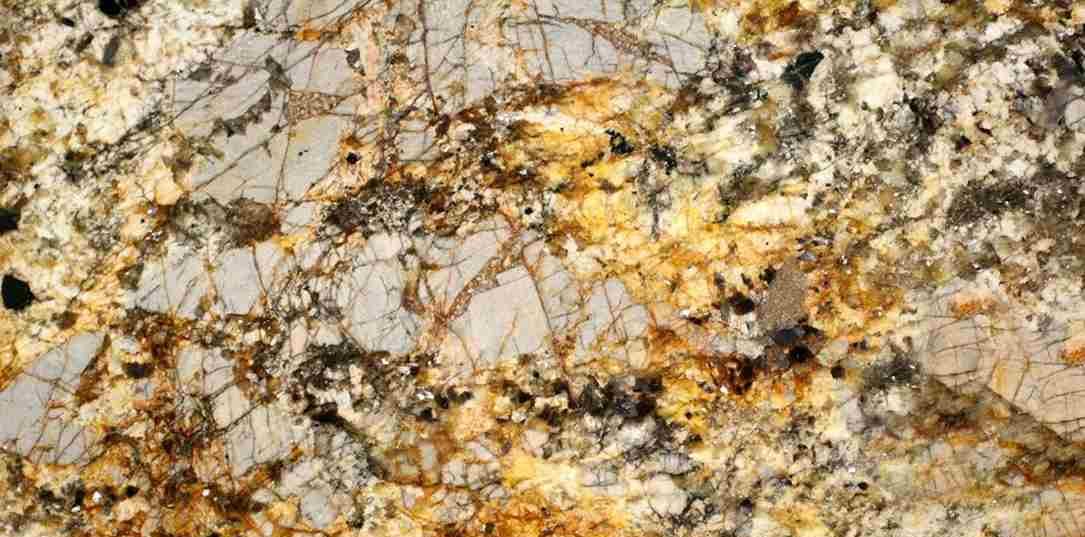 These plagioclases are usually oligoclase and in some cases andesine. Like granite, syenite is also an ingenious rock of light color having a massive crystalline structure. Its texture is also similar to granite. Syenite is composed of minerals like orthoclase, plagioclase, hornblende and muscovite & biotite. despite white granite, quartz doesn’t exist in the composition of syenite, turning it into a sub-acidic type of rock. The syenite has a crushing strength varying between 90 MPa to 150 MPa. Syenite is used for the construction of pavements, external facings of building walls, decorative purposes, kitchen tops, etc.
These plagioclases are usually oligoclase and in some cases andesine. Like granite, syenite is also an ingenious rock of light color having a massive crystalline structure. Its texture is also similar to granite. Syenite is composed of minerals like orthoclase, plagioclase, hornblende and muscovite & biotite. despite white granite, quartz doesn’t exist in the composition of syenite, turning it into a sub-acidic type of rock. The syenite has a crushing strength varying between 90 MPa to 150 MPa. Syenite is used for the construction of pavements, external facings of building walls, decorative purposes, kitchen tops, etc.
Synthesis and marble structure
The texture of most traditions is grainy. Porphyry sinuses are more common in floods, dykes, and small intrusive masses. Grain size may vary from small to large. In porphyric syenites, the background may have tracheal tissue.  Applet and pegmatite textures are much less common in this category than granites. Potassium feldspars are shaped rather than amorphous. The ferromanginine minerals are found in these rocks from shaped to amorphous and are more amorphous in alkaline syenites. Sub-minerals such as apatite, zircon, sphene, and mannite are usually shaped, while quartz, fluorine, and feldsparoids fill voids.
Applet and pegmatite textures are much less common in this category than granites. Potassium feldspars are shaped rather than amorphous. The ferromanginine minerals are found in these rocks from shaped to amorphous and are more amorphous in alkaline syenites. Sub-minerals such as apatite, zircon, sphene, and mannite are usually shaped, while quartz, fluorine, and feldsparoids fill voids.
Place of formation of syenite stones
Synite rock is a relatively rare rock and is mostly seen in the form of irregular masses, stocks and dykes and floods. Some traditional massifs are found in the margins of granite massifs. In lactotopes in which subtraction is performed, the syenites, and especially the alkaline syenites, are seen as layered. Synite is an all-crystalline phanerite intrusive rock with the following main minerals. Potassium feldspars of 30 to 80 percent, sodium plagioclase 5 to 25 percent, and ferromanginine minerals 5 to 40 percent of plagioclase may be very low or non-existent. If the amount of plagioclase is more than potassium feldspar, the sabot rock of myotronite will be inclined.  In common syenites, potassium feldspars are the main minerals and in exceptional cases make up up to 90% of the rock. There are far fewer microclinics. There is a lot of macabre cashmere. In porphyry traditions and traditions in dykes and floods. The microcline may not only be present in the form of primary coarse crystals, but is sometimes the most important feldspar that forms the rock paste. Sodium plagioclase, however, may be present in very small amounts. But it is almost always found in these rocks, and in some types of cinnamon they may be as large as potassium feldspars. These plagioclases are usually oligoclase and in some cases andesine. Synthetic mass in north of Esfordi mine on a macroscopic scale of light pink to dark pink and flesh red is found. The predominant texture of these rocks is heterogranular, but other textures such as Pooi-Kylitics, perturbation and texture of the checkerboard are also seen.
In common syenites, potassium feldspars are the main minerals and in exceptional cases make up up to 90% of the rock. There are far fewer microclinics. There is a lot of macabre cashmere. In porphyry traditions and traditions in dykes and floods. The microcline may not only be present in the form of primary coarse crystals, but is sometimes the most important feldspar that forms the rock paste. Sodium plagioclase, however, may be present in very small amounts. But it is almost always found in these rocks, and in some types of cinnamon they may be as large as potassium feldspars. These plagioclases are usually oligoclase and in some cases andesine. Synthetic mass in north of Esfordi mine on a macroscopic scale of light pink to dark pink and flesh red is found. The predominant texture of these rocks is heterogranular, but other textures such as Pooi-Kylitics, perturbation and texture of the checkerboard are also seen. 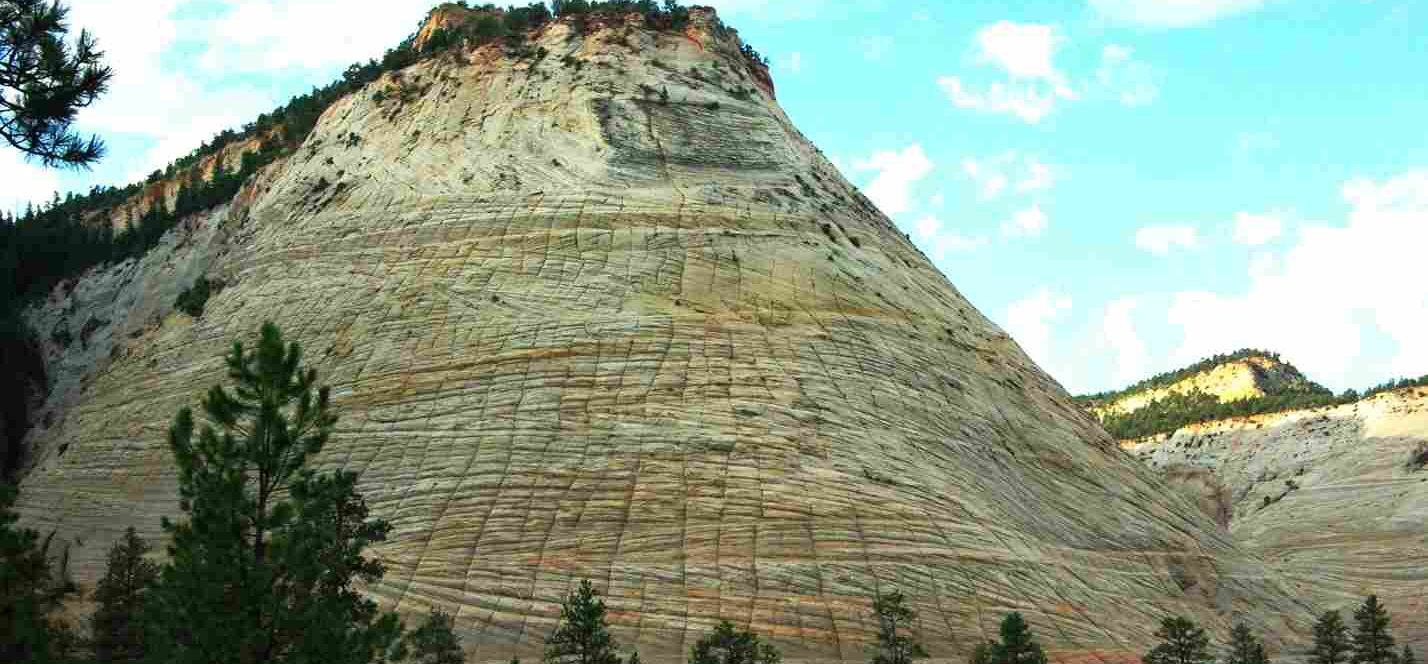 The main minerals that make up these rocks are: Of alkaline feldspar (orthosis (45-55%), palgiocals (25-95%), amphibole (95-90%) and pyroxene. 90-5% (and quartz) to 3% (biotite) to 2% (apatite, zircon and turbid minerals as Sub-minerals are present. Calcite, sericite, clay minerals, chlorite, biotite, epidote, actinolite, and Iron oxides are formed by alteration in these rocks. The general composition of this mass is cynical and it tends to be like quartzite. Alkaline feldspars undergo relatively severe alteration and compared to Clay minerals they show a cloudy and dusty appearance. Peritoneal tissue in some feldspar alkaline crystals is also visible. Palgiocal crystals belong to two different generations: coarse-shaped types and blade types. Formed types palgiocal crystals that are primitive and similar to alkaline feldspars undergo relatively extensive alteration. They are composed of kaolin clay minerals, sericite, chlorite, epidote and calcite also as the Second group, small blade crystals are completely healthy and are seen in groups with quartz and sometimes calcite.
The main minerals that make up these rocks are: Of alkaline feldspar (orthosis (45-55%), palgiocals (25-95%), amphibole (95-90%) and pyroxene. 90-5% (and quartz) to 3% (biotite) to 2% (apatite, zircon and turbid minerals as Sub-minerals are present. Calcite, sericite, clay minerals, chlorite, biotite, epidote, actinolite, and Iron oxides are formed by alteration in these rocks. The general composition of this mass is cynical and it tends to be like quartzite. Alkaline feldspars undergo relatively severe alteration and compared to Clay minerals they show a cloudy and dusty appearance. Peritoneal tissue in some feldspar alkaline crystals is also visible. Palgiocal crystals belong to two different generations: coarse-shaped types and blade types. Formed types palgiocal crystals that are primitive and similar to alkaline feldspars undergo relatively extensive alteration. They are composed of kaolin clay minerals, sericite, chlorite, epidote and calcite also as the Second group, small blade crystals are completely healthy and are seen in groups with quartz and sometimes calcite. 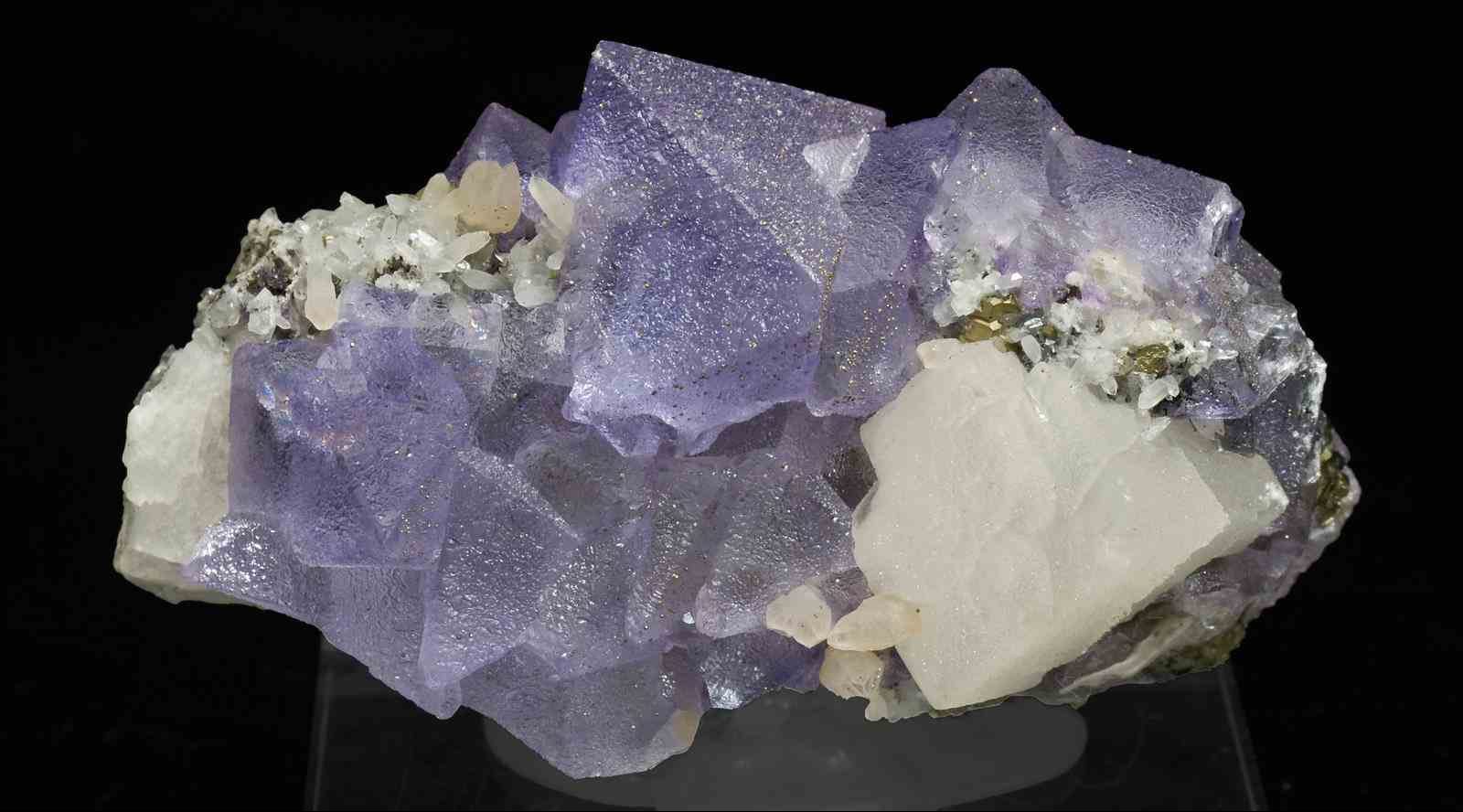 This group of palgiocals have a sedative composition. The formation of these palgiocals to alteration attributed to sodium in the sense that as a result of the performance of the fluid rich in Ca at +2, this element replaces +2 The network of calcified palgiocalzas and produces palgiocalcas ,sedic released also in the formation of + Al3 Ca and Calcite and muscovite minerals participate. Histological studies indicate the association of sodium palgiocals with calcite and Sometimes muscovite (sericite) is in the studied samples. Some crystals of palgiocals Show that in these palgiococcis, small albite blades are placed in such a way that the texture resembles the way they create a chessboard with the difference that each of the units is not square and has an irregular shape. According to Smith, tectonic stresses and strains play a role in the formation of checkered plate palgiocals. It is effective to say that this tissue was attributed by Smith (9194) to the primary potassium-bearing sodium feldspar metasomatism Pyroxenes are mostly sodium compounds but non-sodium pyroxenes (clinopyroxene). Also they are present in alteration of sodium pyroxenes and clinopyroxenes into secondary amphiboles (actinolite).
This group of palgiocals have a sedative composition. The formation of these palgiocals to alteration attributed to sodium in the sense that as a result of the performance of the fluid rich in Ca at +2, this element replaces +2 The network of calcified palgiocalzas and produces palgiocalcas ,sedic released also in the formation of + Al3 Ca and Calcite and muscovite minerals participate. Histological studies indicate the association of sodium palgiocals with calcite and Sometimes muscovite (sericite) is in the studied samples. Some crystals of palgiocals Show that in these palgiococcis, small albite blades are placed in such a way that the texture resembles the way they create a chessboard with the difference that each of the units is not square and has an irregular shape. According to Smith, tectonic stresses and strains play a role in the formation of checkered plate palgiocals. It is effective to say that this tissue was attributed by Smith (9194) to the primary potassium-bearing sodium feldspar metasomatism Pyroxenes are mostly sodium compounds but non-sodium pyroxenes (clinopyroxene). Also they are present in alteration of sodium pyroxenes and clinopyroxenes into secondary amphiboles (actinolite). 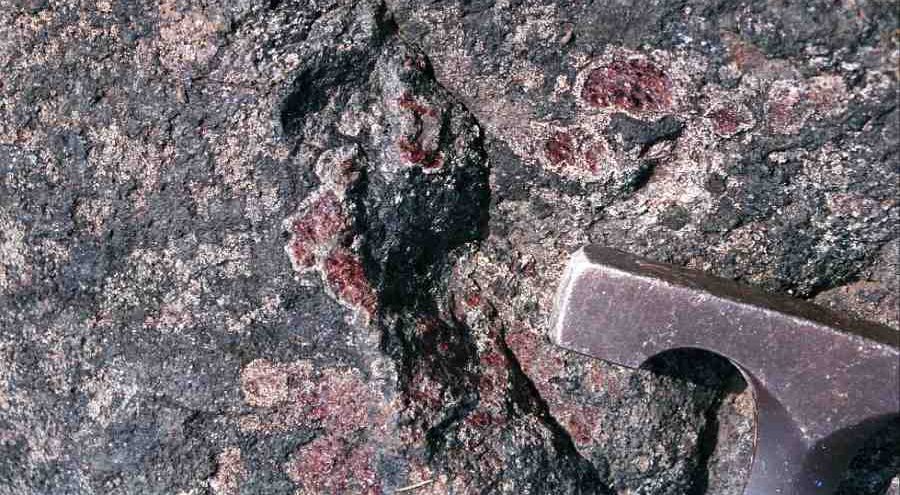 It can be seen in some places as a result of alteration of clinopyroxenes, calcite is also formed from the primary amphiboles in these rocks and the colors are brown and sodium multicolored blue to bluish green. Amphiboles are more abundant than pyroxenes, however, amphiboles are mostly secondary. Biotite is present in both primary and secondary rocks. Primary biotite crystals in rock, under the influence of hydrothermal solutions, is there to severe degrees of chlorite that are decomposed. Quartzite is observed both primary in the space between crystals and secondary with albite in effect. Sodium and silica metasomatism are observed in the samples. Frequency of primary and secondary quartz in the idea of syenite use in industry was first claimed by Canadians due to large reserves of syenite in south and south western parts of Canada. From that time, it marked a milestone in the history of glass and ceramic tiles production as a perfect replacement. My company has largely led the supply and export of nepheline syenite with its various types and colors to all countries around the world and is honored to present the best of our products through the link provided above. All you require is just press the link and inter the world of syenite trade with us.
It can be seen in some places as a result of alteration of clinopyroxenes, calcite is also formed from the primary amphiboles in these rocks and the colors are brown and sodium multicolored blue to bluish green. Amphiboles are more abundant than pyroxenes, however, amphiboles are mostly secondary. Biotite is present in both primary and secondary rocks. Primary biotite crystals in rock, under the influence of hydrothermal solutions, is there to severe degrees of chlorite that are decomposed. Quartzite is observed both primary in the space between crystals and secondary with albite in effect. Sodium and silica metasomatism are observed in the samples. Frequency of primary and secondary quartz in the idea of syenite use in industry was first claimed by Canadians due to large reserves of syenite in south and south western parts of Canada. From that time, it marked a milestone in the history of glass and ceramic tiles production as a perfect replacement. My company has largely led the supply and export of nepheline syenite with its various types and colors to all countries around the world and is honored to present the best of our products through the link provided above. All you require is just press the link and inter the world of syenite trade with us.
